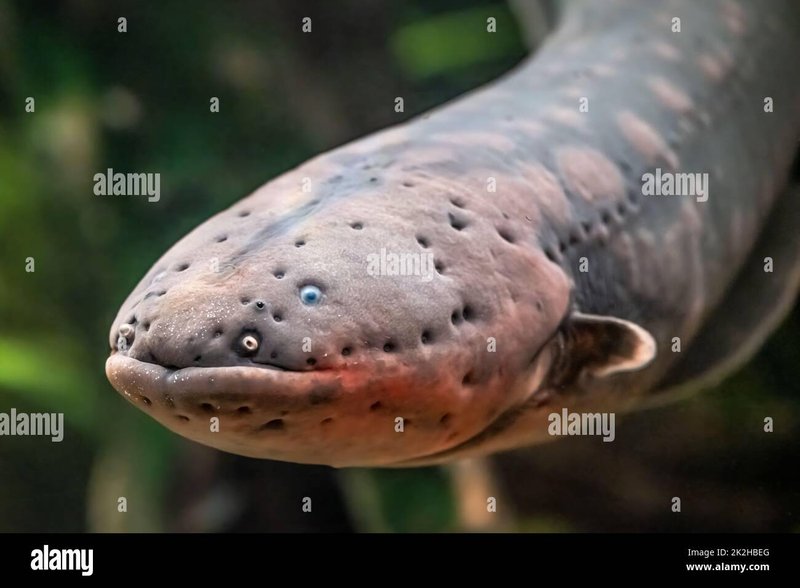
Now, before you start picturing a floating light bulb, let’s break down how these amazing creatures work. Electric eels are not actually eels; they’re more closely related to catfish. These fascinating fish can produce powerful electrical charges that serve various purposes—like hunting, navigating, and even socializing with other electric eels. If you’re curious about how they do this, you’re in the right place. Grab a seat, and let’s dive into the underwater world of these electric wonders!
Understanding Electric Eels
Electric eels (Electrophorus electricus) are primarily found in the Amazon and Orinoco river basins. Often growing up to 8 feet long, these creatures have three pairs of abdominal organs that produce electric charges. Here’s the thing: they use electricity for several essential functions. Think of it as their version of a smartphone—helping them navigate through their environment, communicate with each other, and even find food.
Electric eels can produce three different types of electrical discharges: low-voltage, high-voltage, and the infamous shock. Low-voltage signals help them sense their surroundings and locate prey. High-voltage discharges can stun or kill other fish, making it easier for the eel to gobble them up. It’s a fascinating way of life, don’t you think?
But their electric powers aren’t just for hunting. They also play a crucial role in socializing. Electric eels can send and receive signals to communicate with each other. This side of their behavior is a bit like texting—sending messages back and forth, letting each other know where they are and what they want. It’s pretty wild!
How Electric Eels Navigate Using Electricity
So, how do electric eels manage to “see” in the dark waters of the Amazon? The secret lies in their ability to produce low-voltage electrical fields. When the eel moves, it emits these electrical signals that bounce off nearby objects. By detecting the changes in these signals, the eel can sense its environment, much like how bats navigate using sonar.
Imagine walking through a dark room while holding a flashlight; you can see where things are based on the light bouncing off the walls. Electric eels do something similar. Their bodies act like biological batteries, allowing them to create and sense tiny electric fields. This skill is especially important in their murky habitats, where visibility is often poor.
Moreover, electric eels can even adjust the strength of their electrical discharges depending on the situation. If they need to be stealthy, they can use weaker signals to avoid alerting prey. On the other hand, if they’re feeling threatened, they can unleash a powerful shock to fend off predators. This flexibility makes them masters of their underwater domain.
Communication Among Electric Eels
You might be wondering how electric eels chat with one another underwater. Their communication happens through low-voltage pulses that are part of their daily interactions. When two electric eels meet, they often exchange these signals to establish their presence. It’s a bit like saying, “Hey, I’m here!” without making too much noise.
The interesting fact is that these communication signals aren’t just random bursts of electricity. Different patterns convey different messages. For instance, if an electric eel wants to mate, it might send specific signals to attract a partner. It’s almost like having a unique ringtone that only certain eels recognize!
These exchanges can also help them establish territory. If an intruder comes near, an electric eel can send warning signals, letting the newcomer know, “This is my space!” It’s a smart way of asserting dominance without resorting to physical confrontation.
The Role of Electric Fields in Hunting
When it comes to hunting, electric eels have a unique advantage. Their ability to produce high-voltage shocks doesn’t just stun their prey; it also helps them locate hidden food. Many fish and amphibians are found hiding among river plants and debris. With the help of electric fields, electric eels can detect the slightest movements nearby.
Picture this: when a fish swims into the electric eel’s territory, it might sneakily hide among the weeds. However, the electric eel can send out low-voltage signals that detect the fish’s movements. Once it knows where its meal is lurking, the eel can move in for a powerful shock, effectively incapacitating its prey. It’s a blend of stealth, communication, and formidable hunting strategy rolled into one.
The high-voltage shocks can reach up to 600 volts, which is enough to stun a large fish or even a human! While they don’t typically pose a danger to humans, it’s best to admire these unique fish from a distance.
The Amazing Biology of Electric Organs
Now, let’s take a closer look at how electric eels generate electricity. Electric eels have specialized cells called *electrocytes* that are stacked like batteries. When the eel wants to produce electricity, these cells activate in unison. Imagine a flip of a switch that turns on a whole row of Christmas lights all at once.
Each electrocyte can generate a small voltage, but together they can create substantial electric potential. The three main organs responsible for this power are the *main organ*, *Hunter’s organ*, and *Saccule*, with the main organ being the most significant contributor to their electrical output. It’s an incredible adaptation that has allowed them to thrive in their environment.
Interestingly, these electrocytes are similar to nerve cells in mammals, meaning they can transmit electrical impulses effectively. This design is key for both communication and navigation. It’s like having a finely tuned signal system that works seamlessly, allowing electric eels to interact with their world.
Why Electric Eels Matter for Ecosystems
Electric eels play a crucial role in their ecosystems, much beyond just being fascinating to watch. They are both predators and prey, fitting into the food web in significant ways. By controlling fish populations, electric eels help maintain balance in their environment.
Furthermore, their unique method of communication and navigation can teach scientists about other species’ behaviors and adaptations. Researchers study electric eels to learn more about bioelectricity, which has potential applications in various fields, including medicine and technology.
In addition, by understanding these creatures, we gain insights into the health of freshwater ecosystems. The presence of electric eels often indicates a healthy environment with diverse wildlife. Protecting their habitats means protecting an intricate network of life.
Electric eels are more than just odd-looking fish. Their ability to navigate and communicate using electricity showcases the wonders of nature’s design. These unique creatures remind us of the incredible adaptations that have evolved over millions of years.
So the next time you think about electric eels, remember all the fascinating things they do beneath the surface. From hunting to communicating and maintaining ecological balance, electric eels are truly remarkable. They spark curiosity and wonder, proving that there’s always something extraordinary hiding just below the water’s surface. Let’s celebrate these electric wonders and the vital roles they play in our world!

